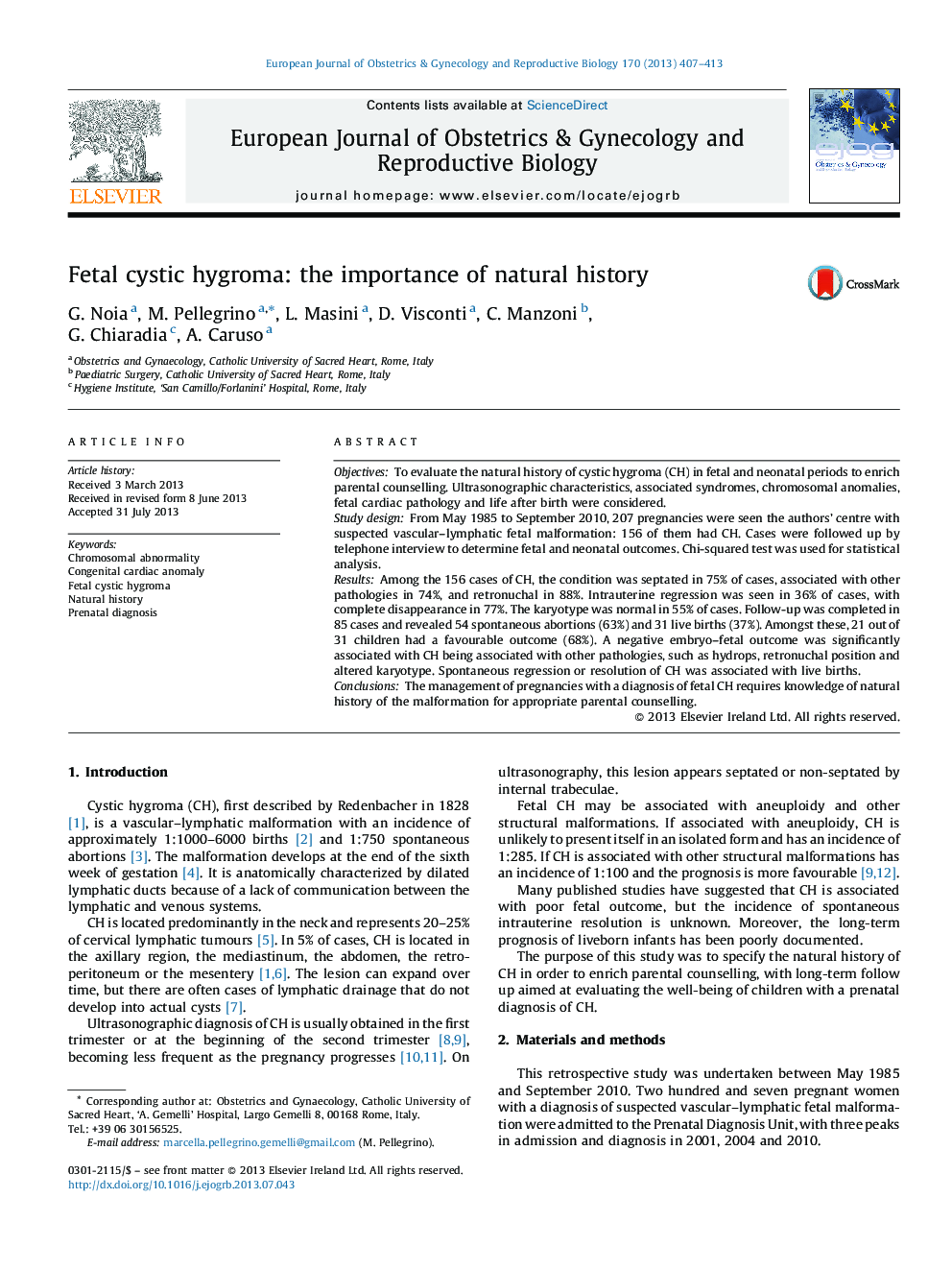| Article ID | Journal | Published Year | Pages | File Type |
|---|---|---|---|---|
| 6174079 | European Journal of Obstetrics & Gynecology and Reproductive Biology | 2013 | 7 Pages |
ObjectivesTo evaluate the natural history of cystic hygroma (CH) in fetal and neonatal periods to enrich parental counselling. Ultrasonographic characteristics, associated syndromes, chromosomal anomalies, fetal cardiac pathology and life after birth were considered.Study designFrom May 1985 to September 2010, 207 pregnancies were seen the authors' centre with suspected vascular-lymphatic fetal malformation: 156 of them had CH. Cases were followed up by telephone interview to determine fetal and neonatal outcomes. Chi-squared test was used for statistical analysis.ResultsAmong the 156 cases of CH, the condition was septated in 75% of cases, associated with other pathologies in 74%, and retronuchal in 88%. Intrauterine regression was seen in 36% of cases, with complete disappearance in 77%. The karyotype was normal in 55% of cases. Follow-up was completed in 85 cases and revealed 54 spontaneous abortions (63%) and 31 live births (37%). Amongst these, 21 out of 31 children had a favourable outcome (68%). A negative embryo-fetal outcome was significantly associated with CH being associated with other pathologies, such as hydrops, retronuchal position and altered karyotype. Spontaneous regression or resolution of CH was associated with live births.ConclusionsThe management of pregnancies with a diagnosis of fetal CH requires knowledge of natural history of the malformation for appropriate parental counselling.
